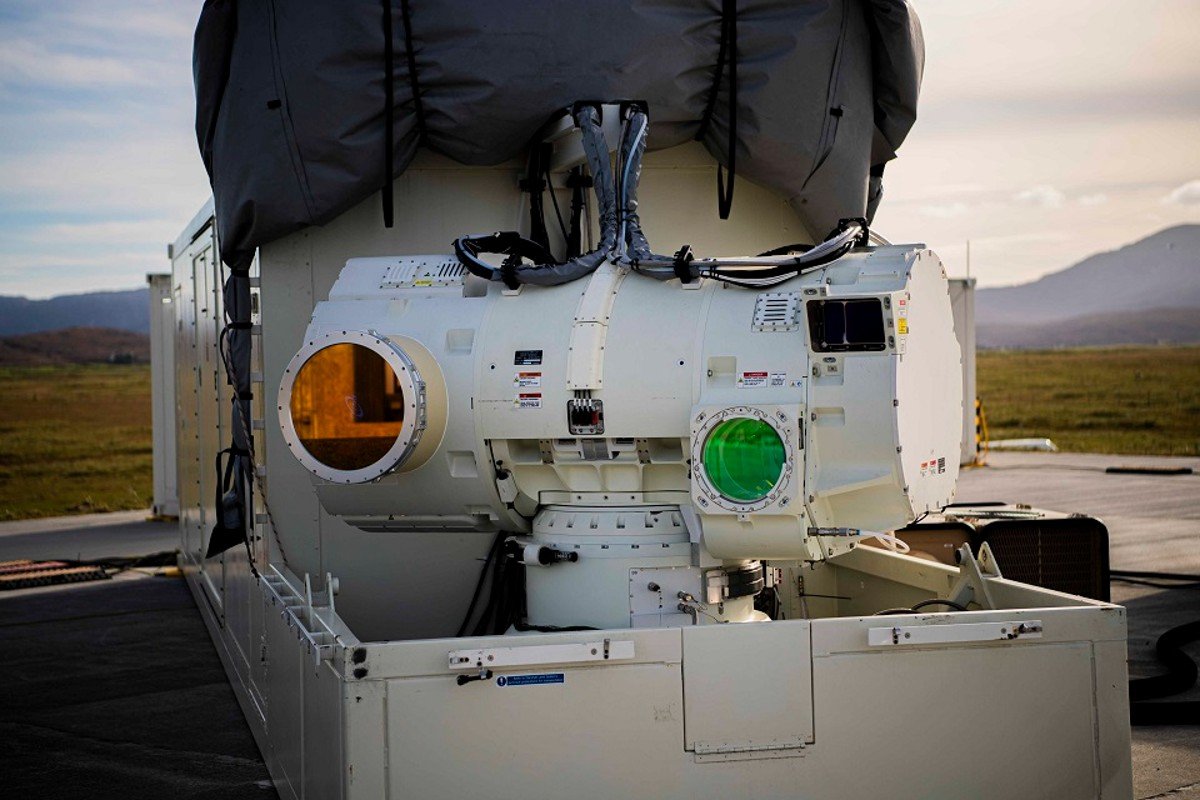
By Ellie Cook
67
Calls for the United Kingdom, a key NATO ally, to test its new laser weapon on the battlefields of Ukraine are growing, as Kyiv struggles to contend with the demands placed on its existing air-defense systems and doubts continue over future Western aid.
The U.K. published de-classified footage of its new laser-directed energy weapon, known as the DragonFire, earlier this week. The British Defense Minister, Grant Shapps, said the brief clip “shows the power of the laser to cut down targets at the speed of light.”
The weapon works by using a concentrated beam to cut through airborne targets, such as drones. One of the main ideas behind laser-directed energy weapons is providing a low-cost way of shooting down incoming targets, taking away the need to expend expensive air-defense missiles.
Throughout more than two years of all-out war, Ukraine has faced Russia’s frequent, destructive onslaughts of kamikaze drone strikes, and Kyiv’s air-defense needs are at the fore of military aid packages from its supporters.
A cost-effective way of taking out incoming aerial drones is precisely what Ukraine needs, some Kyiv sources argue, raising the question of whether the conflict could be the ideal combat conditions to test the new technology.

The Bulletin
“We are ready to test it in Ukraine,” Ukrainian MP Oleksiy Goncharenko told Newsweek on Thursday.
“Ukraine is ready to take and test the operation of such a laser complex in combat conditions,” Anton Gerashchenko, a former adviser to Ukraine’s interior minister, said in a post to social media platform, X.
Newsweek understands from the U.K. Ministry of Defense (MoD) that the DragonFire is not yet operational, and the weapon system is still in the research and development phase. There are currently no plans to deploy the system in Ukraine.
The U.K. said earlier this year that it had testing the DragonFire, which is accurate enough to strike a £1 coin, roughly the size of a U.S. quarter, from a distance of around a kilometer (0.6 miles).
The MoD says it is continuing to develop “game-changing” technology such as the DragonFire and is “advancing the plans which will ultimately bring them into service.”
“This type of cutting-edge weaponry has the potential to revolutionize the battlespace by reducing the reliance on expensive ammunition, while also lowering the risk of collateral damage,” Shapps said in mid-January.
The range of the DragonFire is classified, but the U.K. has said it can tackle any visible target.
Firing the DragonFire for 10 seconds costs around the same amount as using normal heating for an hour, and the laser has a price tag of less than £10, or under $13, per shot, according to the U.K.
“This stands in stark contrast to the hundreds of thousands, or even millions, of dollars that a sophisticated air-defense or missile interceptor can cost,” James Black, an analyst with the European branch of the RAND think tank, said in an article published in late January.
The U.S.—the largest single donor of military aid to Kyiv—said on Tuesday that a new, $300-million tranche of aid would help tide Ukraine over with its “immediate” air-defense and artillery needs. The aid includes shoulder-fired Stinger anti-aircraft missiles.
Further aid cannot be authorized without additional funding being approved by Congress, and President Joe Biden‘s administration officials have warned that Ukraine’s war effort will be jeopardized without new funds and military equipment.



